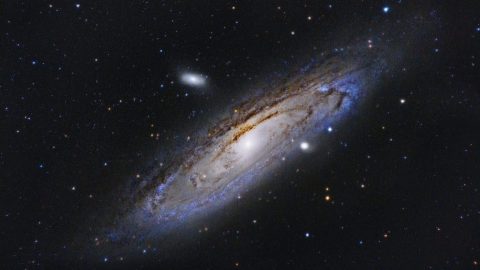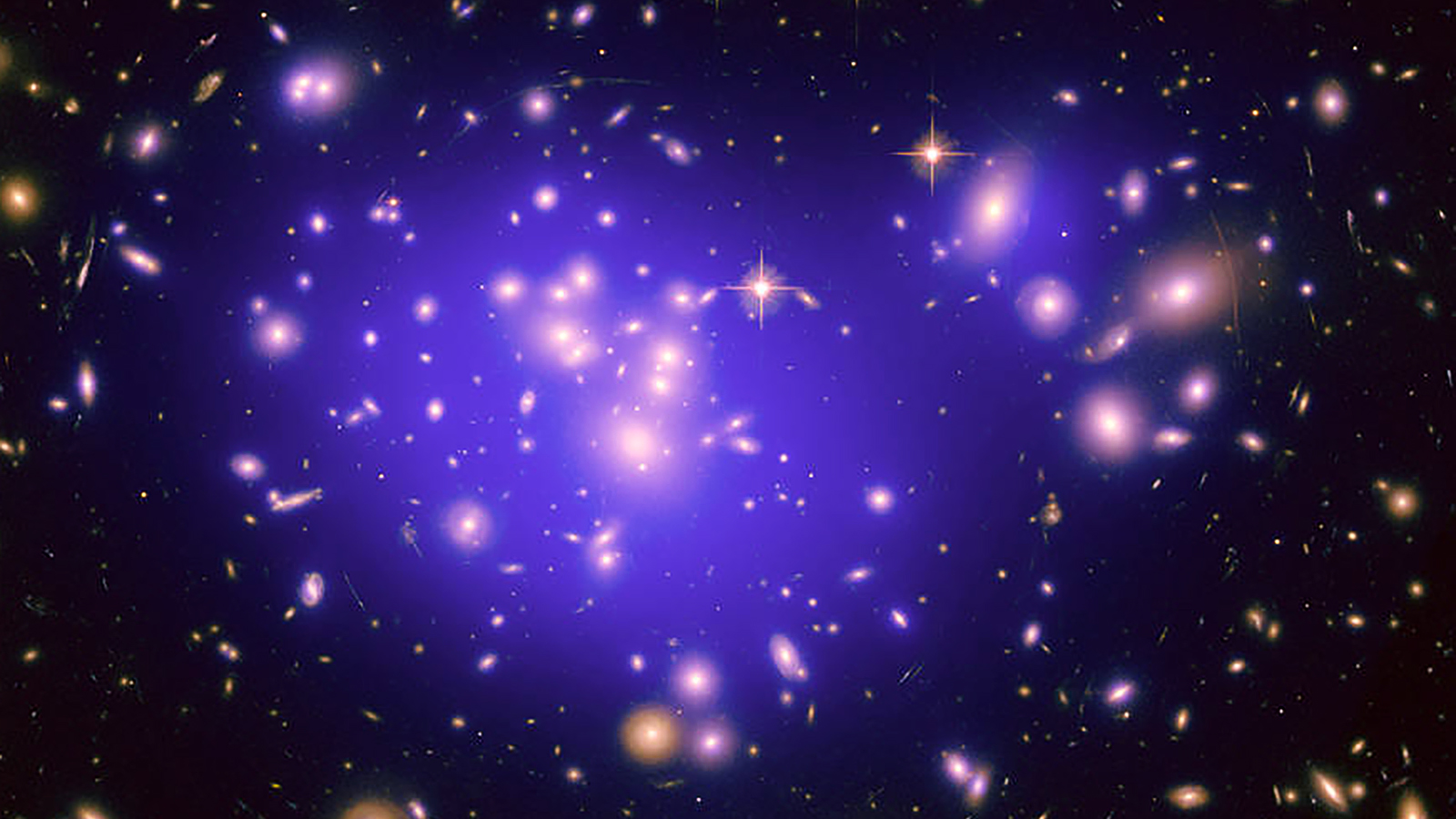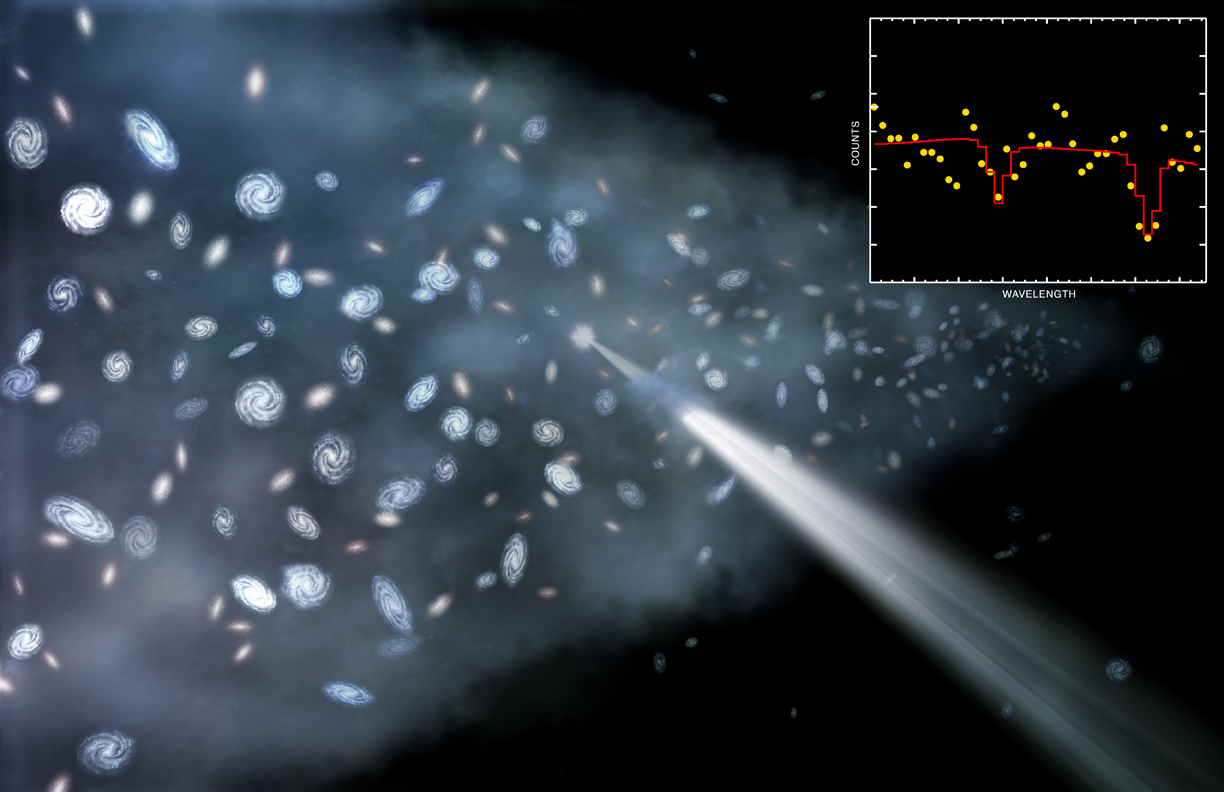Have we gotten dark matter all wrong?

In the 1930s, the bolo-tie-wearing astronomer Fritz Zwicky found something strange in the motions of galaxies. They were moving far too quickly within their clusters than they should be, based on their mutual gravitational attraction. The clusters also should have scattered themselves apart billions of years ago, but yet they remained intact. Figuring that there was some component of the clusters at work that he could not directly see, the Swiss scientist named this material “dunkle Materie”—dark matter—and moved on.
Decades later, astronomer Vera Rubin found a similar oddity. In the 1970s, she discovered that stars within galaxies were orbiting much faster than they should be, meaning that there had to be an invisible substance, one that was suffusing every galaxy, keeping everything from flying apart like an out-of-control merry-go-round. It must be something like Zwicky’s dark matter.
We might need to radically revamp our understanding of fundamental physics—and the universe itself.
Today, modern cosmologists have dozens of independent lines of evidence that point to the existence of dark matter, from the behavior of individual galaxies to the evolution of the universe itself. And yet we can only detect its presence through gravity, meaning that we have no idea what dark matter really is—despite estimates that it accounts for more than 85 percent of the mass of every galaxy in the universe.
After nearly a century of hunting, cosmologists are now worried that the search for dark matter is growing cold. Is dark matter a sort of highly technical, scientific version of magical thinking? A tidy way of explaining away gaps in our limited, human understanding? If scientists don’t find more concrete evidence for dark matter soon, we might need to radically revamp our understanding of fundamental physics—and with it, the universe itself.
To solve numerous long-standing problems in physics, including dark matter, in the 1980s, some theorists proposed a new kind of particle, known as a WIMP: a weakly interacting massive particle. Despite their name, these particles would be rather hefty, easily outweighing more familiar particles like protons and neutrons. But otherwise, these dark matter particles would share nothing in common with those we know; WIMPs would not participate in the electromagnetic force, rendering them invisible to direct observation (with the small exception of the extremely rare interaction with normal matter through the weak nuclear force).

Cue the ensuing particle (and Nobel) chase, with advanced efforts, like the Cryogenic Dark Matter Search, popping up around the globe, charged with the mission of catching a stray heavy WIMP.
Decades after the initiation of these missions, the grand total of captured or detected WIMPs is … zero.
These results have not been entirely unproductive. Particle physics and cosmology can tell us the gross properties of this mysterious particle (or particles, if there happens to be more than one type comprising the universe’s dark matter), but it has not been able to provide the specifics. Null results in these experiments can at least tell us what the dark matter is not. And as the years go on, the range of possibilities of what the WIMP could be have gotten narrower and narrower.
But now the constraints are so narrow that physicists are wondering if we’ve gotten dark matter all wrong. Our experiments are tuned to find WIMPs. These WIMPs are heavy particles motivated by theories in particle physics. So perhaps our continued null results are telling us that WIMPs aren’t the answer. Maybe it’s something else, even more ghostly, even more effervescent, even lighter.
The idea that dark matter is made of a particle that is much, much lighter than we previously thought doesn’t come out of nowhere. For one, we already know of one kind of particle that is both lightweight and invisible: the neutrino. We have not yet ascertained the precise mass of the neutrino, but our upper limits place its mass at no higher than about 500,000 times lighter than the electron (the electron itself is about 2,000 times lighter than the proton).
Second, other outstanding problems in high-energy physics have suggested their own classes of new particles, known as axions, that would also happen to fit the bill of ultra-light and otherwise invisible particles. These particles would sail through our detectors without a hint of their existence, potentially explaining why we have yet to find the dark matter that seems so integral to explain our observations of the universe.
Just as in the case of the WIMPs, there is a wide variety of potential masses for this form of ultra-light dark matter. In the most extreme cases, the dark matter particle could be a trillion-trillion times lighter than the electron.
And this is where things get strange. The proposed WIMPs are exotic because they are largely invisible but otherwise act like normal particles. They would zoom around through space like tiny little dark bullets, exactly like any other particle of nature would do.
But the ultra-light dark matter is so light that it would look more like, well, light. All objects in nature exhibit wave-particle duality, sometimes manifesting their behaviors as waves and sometimes as particles. Most fundamental particles spend most of their lives acting like particles, bouncing and wiggling at will. But ultra-light particles act more like waves, sloshing and scattering around. The lightest particles we know are the photons, the carriers of the electromagnetic force, and are completely massless, and they are often very wavy: You can squeeze light through narrow channels, bend it around corners, and add the particles together just like waves of water.
Ultra-light dark matter would behave in the same way. Instead of buzzing around like billions of furious invisible bees in the cosmos, this form of dark matter would slosh back and forth, with waves of dark matter lapping against the stellar shores of every galaxy. An ocean of dark matter, with the galaxies as nothing more than brightly lit buoys bobbing up and down in their gravitational embrace.
Just as waves of water can converge into tremendous freak tidal waves, researchers have discovered that ultra-light dark matter could theoretically clump up on itself, forming invisible “dark stars” made of concentrated dark matter. If the ultra-light dark matter interacts with itself, these dark stars could become extremely dense, right on the precipice of forming black holes, before ripping themselves apart in a singular burst of energy, completely invisible to any telescope.
But searching for these ultra-light ghost particles requires a far different approach than a quest for WIMPs. Newer experiments, such as the Axion Dark Matter eXperiment at the University of Washington’s Center for Experimental Nuclear Physics and Astrophysics, use resonant cavities buried deep underground. The hope is that when an axion encounters an incredibly strong magnetic field, it could occasionally find itself turning into a photon. So, if we design an experiment with an incredibly strong magnetic field and find more photons in the apparatus than we expect, it might be a sign of axions floating around us. If dark stars exploded, these kinds of experiments might see a burst of axions (signaled by a sudden surge of extra photons) flooding through their detectors, just as we see a flash of light when stellar supernovas go off.
Nature is unforgiving. Our best ideas, no matter how motivated by theory, by elegance, or even by sheer will must all stand up to experimental scrutiny. If there’s no evidence to support an idea, we must discard it.
The dark matter hypothesis—that there is a substance that dominates the mass of the universe that is largely invisible—can only remain viable if we someday find direct evidence for these new kinds of particles. The nearly 40-year-old WIMP paradigm is becoming increasingly untenable. But it could be that axions and their ultra-light cousins are no more likely to exist.
It could be that we are completely, totally off base. That there is no new particle; that what we know of the universe from our current understanding of particle physics is it. In this scenario, we must still explain our cosmic observations. We could do this by modifying our understanding of the force of gravity. Einstein’s general relativity has proven itself in every experimental trial it has faced, but past results are no guarantee of future returns.
Unfortunately, every single attempt to go beyond Einstein’s theory to explain away dark matter as a great cosmic misunderstanding has failed in their own way. Today, there are no viable alternatives to general relativity that are able to explain the totality of evidence we have so far in favor of dark matter (in other words, theories that modify general relativity to explain one observation or another, like the motions of stars within galaxies, still require at least some “dunkle Materie” to explain the remaining observations).
If we fail to find direct evidence for dark matter in any form, whether WIMP or ultra-light, we’ll have some serious work to do. Something must explain the observations that we are making in the wider universe. Perhaps some brilliant mind will come up with a revolution of our understanding of gravity, wiping away the need for dark matter in a new, all-encompassing paradigm. Perhaps another genius will devise an extension to particle physics and find an entirely new class of particles that can account for the dark matter with properties that we can detect with new methods.
Or, perhaps we will be doomed to decades more of frustration, with all evidence pointing to the existence of dark matter despite our inability to directly detect it, forcing us to revise our understanding of the relationship and role of all forms of matter in the universe.
In the meantime, we can hold out hope for the possibility that we are awash in a vast sea of particles so faint that only in the motions of galaxies can we find evidence for their subtle but essential machinations, unseen dark stars exploding around us.
This article originally appeared on Nautilus, a science and culture magazine for curious readers. Sign up for the Nautilus newsletter.





